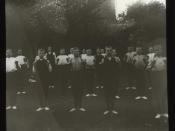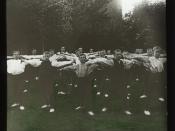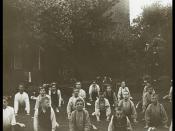Cardiovascular fitness training, also known as aerobic training, is sustained exercise involving the large muscle groups. This exercise should increase the heart rate to a designated range called the target heart range or exercise heart range. Sometimes you will see the terms "rate" or "range" used interchangeably but "range" is generally a scope of numbers which encompass the more specific "rate," which is usually one number.
No matter which term is used, a range of goal numbers for the target or exercise heart rate is usually the best method of actually monitoring one's heart rate during activity. It is difficult to maintain and remain at one specific heart rate number. A range allows an individual to readily monitor his/her own target heart rate while exercising.
Some good examples of cardiovascular fitness activities include, but are not limited to, brisk walking, biking, running, swimming, cross country skiing, in-line skating, aerobic dance, and stepping.
It does not matter if you do your workout indoors or out, on a machine or not. It doesn't even matter if you do a variety of different cardiovascular workouts. This is called cross training and it is an effective way to vary your cardiovascular workouts.
The bottom-line goal is to raise your heart rate to your target range, keep it there for thirty minutes, and do this at least three times per week. Make sure if you are doing an activity like swimming or in-line skating, that your skill level is sufficient enough to allow you to do a proper cardiovascular workout. Start/stop activities, such as tennis, racquetball, and basketball, are great supplemental workout fun, but do not provide enough sustained time in the target heart range to be used as your primary means of cardiovascular fitness.
In order to gain the benefits of cardiovascular training, one...


